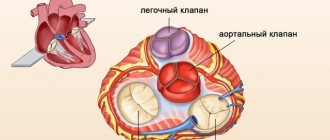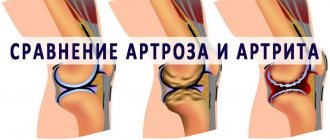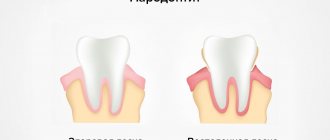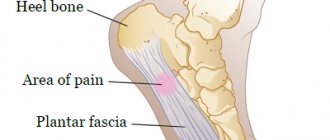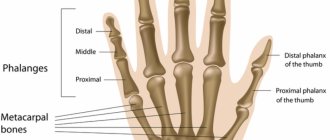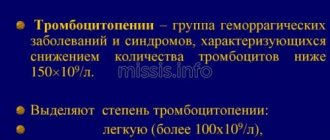Features of the action of anticoagulants
Drugs from this group effectively prevent venous thrombosis and complications of atrial fibrillation. The most popular drugs include Warfarin, which suppresses vitamin K and binds well to protein. The dosage must be selected by a specialist, since an excessive amount of the drug taken leads to uncontrolled bleeding. Doctors today often prescribe Eliquis to prevent thromboembolism after endoprosthetics operations. p/p/o 5 mg No. 60.
Simultaneous administration of anticoagulants and antiplatelet agents?
- The intake of drugs from the groups of anticoagulants and antiplatelet agents is monitored by tests for blood clotting and hemoglobin. The dosage of medications is prescribed only by the attending physician with periodic testing of the results. When taken together, the percentage of active substances should be minimal.
- With combination therapy, the effect of the drugs is enhanced and can lead to internal bleeding. In case of a drug overdose, the patient experiences bleeding from the nose, blood clots in the stool, severely bleeding gums, and a long menstrual cycle.
In case of overdose
- During the period of taking medications, the patient must take into account the high risk of bleeding and observe safety measures. Simple hygiene procedures can lead to prolonged bleeding. When visiting dentists, cosmetologists and other specialists, you need to warn about the possible consequences.
- In medical studies, in some cases, combination therapy helped reduce mortality and the incidence of cardiovascular diseases.
How do antiplatelet agents work?
Drugs from this category stop the production of thromboxane B and are recommended for use for the prevention of heart attacks and strokes. They effectively prevent platelets from sticking together and forming blood clots. The most famous is Aspirin or its modern analogue Cardiomagnyl tab. p/p/o 75 mg+15.2 mg No. 100. It is often prescribed to prevent heart disease in a maintenance dosage over a long period of time. B ADP receptor inhibitors are prescribed after a stroke or heart valve replacement. Stops the formation of blood clots by introducing B glycoprotein into the bloodstream. B
Cardiomagnyl - an anticoagulant or not?
- The active ingredient of Cardiomagnyl is acetylsalicylic acid with the addition of magnesium hydroxide. Regular use of the drug in small quantities has an antiaggregation pharmacological effect on platelets.
- Cardiomagnyl reduces the likelihood of reducing cardiovascular diseases and the formation of blood clots.
- The enteric form of the anticoagulant has no advantages over conventional acetylsalicylic acid. The main advantage of tablets is convenient dosage, without the need to divide the tablet into several parts.
From blood clots
Combination
Interaction with other thrombolytics (streptokinase) is prohibited. Many people are interested in what is the difference between antiplatelet agents and anticoagulants. The second drugs are similar in clinical effectiveness. But these are different types of drugs. Unlike antiplatelet agents, it has an active and rapid mechanism of action, a pronounced and short-term effect. They thin the blood and are suitable for preventing thrombosis. Often used in emergency situations.
Do not combine anticoagulants and thrombolytics at the same time. This significantly increases the risk of internal bleeding. It is important to understand that the use of other medications may increase or decrease the effectiveness of antiplatelet drugs.
During the period of use of antiplatelet agents, it is necessary to stop smoking and drinking alcohol. You should tell your dentist if you are taking these medications if you need to undergo a surgical procedure.
This is due to the fact that antiplatelet agents increase bleeding and reduce blood clotting. There is a risk of dangerous hemorrhage before surgery.
Therefore, before planning surgery, it is necessary to interrupt therapy for a week. They do this gradually. But before this, a person should consult a specialist.
Antiplatelet agents, anticoagulants, thrombolytics
- Antithrombotic drugs include antiplatelet agents, anticoagulants, and thrombolytics . They prevent the formation of blood blockade and help eliminate blood clots.
- To prevent arterial thrombosis, angioplatelet agents are prescribed.
- are used to prevent thrombosis in the veins and ventricles of the heart .
The main purpose of antiplatelet agents and anticoagulants is to thin the blood, strengthen the walls of blood vessels and prevent platelets from sticking together.
Drugs
Antiplatelet drugs improve the patient’s quality of life in the following pathologies:
- deficiency of arterial blood in the heart muscle;
- dysfunction of the placenta during pregnancy;
- after surgical operations on blood vessels;
- non-inflammatory brain damage.
Thrombolytics are prescribed to eliminate existing clots. Their action is aimed at converting thrombin into split fibrin. Drugs are prescribed for diagnoses:
- coronary heart disease, as a result of blood clot formation;
- focal cerebral ischemia;
- blockage of the pulmonary artery by blood clots;
- thrombosis of the main veins and arteries.
How exactly do anticoagulants differ from antiplatelet agents?
Both groups of drugs are intended to thin the blood, but they do this in different ways. Anticoagulants act on blood proteins, interfering with the conversion of prothrombin to thrombin, which leads to the formation of blood clots. The mechanism of action of antiplatelet agents is aimed at blocking receptors on the surface of platelets. In the process of blood clotting, special mediators are activated, which are released by tissues when damaged. In response, platelets send chemicals that lead to blood clotting, while antiplatelet agents inhibit this process. B
- What are anticoagulants, which of them are classified as drugs of direct and indirect action
Antiplatelet agents or anticoagulants - which is better?
- At the first signs of blood clotting, it is advisable to use antiplatelet agents. Over-the-counter drugs with a mild effect and an affordable price can be taken for a long period for preventive purposes, as well as during the rehabilitation period. The most trusted drugs are those containing acetylsalicylic acid.
- Higher pricing policy for anticoagulants. Their action is considered more severe. With long-term use, the likelihood of side effects is higher than with antiplatelet agents.
- Antiplatelet agents and anticoagulants have a weak effect on the resulting blockages, but stop the formation of new foci, thereby preserving the vital functions of patients with pre-infarction and pre-stroke conditions.
Antiplatelet agents
Home Medical Encyclopedia Medicines Medicines that primarily affect tissue metabolic processes
DIPIRIDAMOLE (Dipyridamolum)
Synonyms: Curantil, Persantine, Anginal, Antistenocardin, Aprikor, Cardioflux, Coribon, Corozan, Coroxin, Dilkor, Dirinol, Novodil, Padikor, Peridamol, Stenocardil, Trancocard, Vadinar, Viskor, Trombonin, Parsedil, Penselin, etc.
Pharmachologic effect. Dipyridamole was originally proposed as a coronary dilator (dilates the blood vessels of the heart) and antianginal (antianginal) agent.
According to experimental data, the drug dilates the coronary vessels (heart vessels), increases the volumetric velocity of the coronary (heart) blood flow, and improves the supply of oxygen to the myocardium (heart muscle). Increases myocardial tolerance to hypoxia (resistance of the heart muscle to lack of oxygen). If blood circulation in the main coronary vessels is impaired, the drug helps improve blood circulation in the collateral vascular network (through vessels through which blood moves around the affected vessel). Under its influence, the total peripheral resistance (total mechanical resistance to blood flow through the vessels) also decreases, systemic blood pressure decreases somewhat, and cerebral circulation improves. In the mechanism of the vasodilating effect of dipyridamole, an essential role is played by the increased formation of adenosine, one of the participants in the autoregulation of coronary blood flow (the heart's regulation of the speed of blood flow through its vessels). Dipyridamole is a competitive inhibitor of adenosine deaminase, an enzyme that breaks down adenosine. As a coronary dilator, dipyridamole currently has limited use. It is sometimes used for chronic coronary heart disease. An important feature of dipyridamole is its ability to inhibit platelet aggregation (sticking together) and prevent the formation of thrombi (blood clots) in blood vessels. Apparently, the drug stimulates the biosynthesis (formation in the body) of prostacyclin and inhibits the synthesis of thromboxanes (biologically active substances involved in the regulation of vascular tone and the blood coagulation system).
Indications for use. It is mainly used as an antiplatelet (preventing platelet aggregation) agent to prevent postoperative thrombosis (formation of a blood clot in a vessel), in case of myocardial infarction, and cerebrovascular accidents.
There is evidence of improvement under the influence of dipyridamole in rheological parameters (characteristics of the physical state of the blood) and kidney function in patients with chronic glomerulonephritis (kidney disease).
Dipyridamole affects the metabolism (transformations in the body) of arachidonic acid and helps to increase the production of prostacyclin in the walls of blood vessels.
In terms of antiaggregation activity, dipyridamole is inferior to ticlopidine and is close to acetylsalicylic acid. At the same time, it is better tolerated than acetylsalicylic acid and does not have an ulcerogenic (causing stomach ulcer) effect. (See also page 158).
Method of administration and dose. Taken orally as an antithrombotic (prevents blood clotting) agent, 0.025 g (25 mg) 3 times a day.
As a treatment for angina pectoris, take orally (on an empty stomach 1 hour before meals) 0.025-0.05 g (1-2 tablets of 0.025 g each) 3 times a day. In more severe cases, 0.225 g (225 mg - 3 tablets of 0.075 g each) per day in 3 divided doses. The course of treatment lasts from several weeks to several months.
Side effect. Dipyridamole is usually well tolerated. In some cases, short-term redness of the face (vasodilating effect), increased heart rate, and allergic skin rash are noted.
Contraindications. Administration of dipyridamole intravenously (as previously suggested in cases of acute attacks of angina) is not recommended. There is evidence that in this case, an uneven redistribution of blood flow in the coronary vessels may be observed (“steal phenomenon”), accompanied by an increase in angina pectoris with depression on the ECG of the ST segment (a decrease in the electrocardiogram of the segment characterizing the level of blood supply to the cardiac tissue).
The drug is contraindicated in cases of widespread sclerosing atherosclerosis of the coronary arteries (a disease of the heart vessels, characterized by a decrease in their lumen). When administered parenterally (bypassing the digestive tract), the solution should not be allowed to get under the skin (tissue irritation is possible). It should not be administered intravenously in precollaptoid conditions and collapse (conditions preceding a sharp drop in blood pressure and a sharp drop in blood pressure).
Do not mix dipyridamole with other drugs in the same syringe (precipitation may occur).
Release form. Tablets (dragées) of 0.025 and 0.075 g; 0.5% solution in ampoules of 2 ml (0.01 g).
Storage conditions. List B. In a dry place.
INDOBUFEN
Synonyms: Ibustrin.
Pharmachologic effect. It has an antiplatelet (preventing platelet aggregation) effect, suppresses platelet activity and prevents thrombus formation (blood clot formation). Does not affect blood coagulation factors, bleeding time slightly increases. Inhibits the enzymes cyclooxygenase and thromboxane synthetase (enzymes leading to the formation of thromboxane, which is involved in the regulation of blood clotting).
Indications for use. Prevention of thrombus formation in ischemic cerebrovascular diseases (diseases of cerebrovascular vessels leading to a decrease in blood flow to brain tissue) and cardiovascular diseases, atherosclerotic lesions of peripheral vessels, thrombosis (formation of a blood clot in a vessel) of veins, diabetes, lipid metabolism disorders, during hemodialysis ( blood purification method)
Method of administration and dose. The daily dose is 0.2-0.4 g orally (after meals). For long-term use, the recommended dose is 0.2 g. For persons over 65 years old, 0.1-0.2 g per day. Before a hemodialysis session, the dose is selected individually. In case of renal failure, it is necessary to reduce the dose of the drug depending on the creatinine clearance (the rate of blood purification from the final product of nitrogen metabolism - creatinine).
Side effect. Dyspeptic symptoms (digestive disorders), allergic reactions, bleeding gums, nosebleeds, gastrointestinal bleeding, hematuria (blood in the urine).
Contraindications. Hemorrhagic disorders (bleeding), peptic ulcer and other diseases of the gastrointestinal tract, allergies to the drug. Indobufen should be prescribed with caution to patients with a history of gastrointestinal diseases; diabetes mellitus (test blood for sugar more often); patients taking other antiplatelet (preventing blood clot formation) drugs or non-steroidal anti-inflammatory drugs.
Release form. Tablets of 0.2 g in a package of 30 pieces.
Storage conditions. In a dry place, protected from light.
ACETYLSALICYLIC ACID (Acidum acetylsalicylicum)
Synonyms: Aspirin, Aspro, Acezal, Aceticyl, Acetol, Acetofen, Acetosal, Acetylin, Aietilsal, Acetizal, Acylpirin, Aspizol, Aspozal, Astrin, Ataspin, Bebaspin/Benaspir, Bispirin, Caprin, Cetazal, Cytopyrin, Clariprin, Darozal, Durazal, Endozalil, Endospirin, Eutosal, Genasprin, Helikon, Izopyrin, Istopirin, Monazalil, Novosprin, Panspiril, Polopirin, Prodol, Rodopyrin, Ruspirin, Salacetin, Saletin, Temperal, Vikapirin, Zorprin, etc.
Pharmachologic effect. Acetylsalicylic acid, along with anti-inflammatory activity, has the ability to slow down platelet aggregation (sticking together) and produce an antithrombotic (preventing blood clotting) effect. It has an inhibitory effect on the spontaneous and induced activity of platelets (intrinsic and induced activity of blood cells responsible for blood clotting), on the release and activation of thrombotic factor III and factor IV (blood clotting factors). In addition, it reduces platelet adhesion (clumping).
Currently, the molecular mechanisms of the antithrombotic action of acetylsalicylic acid have been studied. It has been shown that its antiaggregation effect (preventing platelet aggregation) is closely related to the effect on the biosynthesis, release and metabolism (exchange) of prostaglandins. It promotes the release of prostaglandins by the endothelium (inner lining) of blood vessels, including PP:> (prostacyclin). The latter activates adenylate cyclase, reduces the content of ionized calcium in platelets, greatly reduces platelet aggregation, and also has disaggregation (preventing platelet aggregation) activity. In addition, acetylsalicylic acid suppresses the activity of cyclooxygenase, which reduces the formation of an endogenous (synthesized in the body) compound of the prostaglandin group (eicosanoids) - thromboxane A2, which is a very active proaggregation (promoting platelet aggregation) factor. However, in large doses, acetylsalicylic acid also inhibits the biosynthesis of prostacyclin and other antithrombotic prostaglandins (biologically active substances involved in the regulation of vascular tone and the blood coagulation system). (See also page 270).
Indications for use. For the correction of hemorheological disorders (changes in blood properties) and the prevention of thrombotic complications in patients with myocardial infarction, cerebrovascular accidents and other cardiovascular diseases. To prevent the formation of postoperative thrombi (blood clots), with thrombophlebitis (inflammation of the vein wall with blockage), thrombosis (formation of a blood clot in a vessel) of retinal vessels, cerebrovascular accidents, etc., as well as to prevent thromboembolic complications (blockage of blood vessels with a blood clot ) for coronary heart disease and myocardial infarction. (See also page 270).
Method of administration and dose. Acetyl-salicylic acid is prescribed as an antiplatelet agent orally at 0.3-0.325 g per day or every other day. Recently, acetylsalicylic acid has been prescribed at a dose of 75 mg per day.
Side effect. Due to the effect on platelet aggregation, as well as some anticoagulating (anti-clotting) activity, periodic blood tests should be performed during treatment with acetylsalicylic acid. With bleeding disorders, especially with hemophilia (a hereditary disease characterized by increased bleeding), bleeding may develop. For early detection of ulcerogenic (ulcer-causing) effects, it is necessary to periodically examine the stool for the presence of blood.
It should be taken into account that under the influence of acetylsalicylic acid, the effect of anticoagulants (drugs that inhibit blood clotting) - derivatives of coumarin, heparin, etc., and hypoglycemic drugs - sulfonylurea derivatives, increases, the risk of gastric bleeding increases with the simultaneous use of corticosteroids and non-steroidal anti-inflammatory drugs, and undesirable side effects increase methotrexate. The effect of furosemide, uricosuric drugs (drugs that remove uric acid - see page 306), and veroshpiron is somewhat weakened.
Release form. Acetylsalicylic acid is available for oral administration in the form of tablets of 0.25 and 0.5 g (for adults) and 0.1 g (scored) for children. (See also page 270).
Storage conditions. In a well-closed container, protected from light.
ACELYSIN (Acelysinum)
Synonyms: Aspisol, Aspidol, Delgesic, Draspir, Egalgic, Flektadol, Laboprin, Lasdol, Lizaspin, Lizoprin, Salizin, Solpirin, Solusprin, Venopyrin, etc.
Pharmachologic effect. It has the pharmacological properties of acetylsalicylic acid.
Indications for use. The same as for acetylsalicylic acid.
Method of administration and dose. Intramuscularly or intravenously, aietylsalicylic acid is used as an antithrombotic (prevents blood clotting) agent in the form of a special drug acelysin. To prevent thrombosis of the coronary vessels (formation of a blood clot in the vessels of the heart) and brain vessels, acelysin is administered 0.5-3.0 ml at a time for 1-2 days. The course of treatment is up to 5 injections, after which, if necessary, you can switch to taking acetylsalicylic acid orally. The size of a single dose and the frequency of repeated administrations of acelysin are determined based on objective data from a laboratory study of hemostatic parameters (values characterizing blood clotting indicators) after the first administration of the drug, the dose of which is usually 0.5-1.0 ml. When administering a drug intravenously to prevent thrombosis (formation of a blood clot in a vessel), it is preferable to slowly infuse it into 150-200 ml of glucose or isotonic sodium chloride solution. (See also page 273).
Side effects and contraindications. See Acetylsalicylic acid.
Release form. In bottles of 1 g of the drug.
Storage conditions. In a dark place at a temperature of +4-+10 °C. Storage of the prepared solution is allowed for no more than 30 minutes; subsequently activity decreases.
PENTOXYFYLLINE (Pentoxyphyllin)
Synonyms: Agapurin, Trental, Oxpentiphylline, Ralofect, Terental, Torental, Arbiflex, Atsupentat 400, Vazopen, Dartelin, Pentamon, Pentilin, Pentohexal 600, Pentomer, Flexital.
Pharmachologic effect. The drug improves microcirculation (blood flow through the smallest vessels of the organ) and rheological properties of blood (the physical state of the blood). Reduces platelet aggregation (sticking together) and leads to their disaggregation (platelet separation), increases the elasticity (deformability) of red blood cells, and reduces blood viscosity. Improves tissue perfusion (blood supply). (See also page 205).
Indications for use. Disorders of peripheral arterial and venous circulation, including against the background of atherosclerosis, diabetes mellitus, obliterating endarteritis (inflammation of the inner lining of the arteries of the extremities with a decrease in their lumen). Trophic disorders (tissue nutrition) - post-stroke syndrome (the patient’s condition after a stroke), varicose ulcers (ulcerations at the site of dilated veins), gangrene (death of tissue with drying out or putrefactive decay), frostbite. Angioneuropathy - paresthesia (feeling of numbness in the extremities), acrocyanosis (blue discoloration of the tips of the fingers, lips, nose), Raynaud's disease (narrowing of the lumen of the vessels of the extremities). Ischemic disorders of cerebral circulation, including in cerebral atherosclerosis (a disease of the blood vessels of the brain, expressed in a decrease in their lumen). Condition after ischemic stroke (insufficient oxygen supply to brain tissue due to acute cerebrovascular accident) or hemorrhagic stroke (acute cerebral circulatory disorder due to rupture of cerebral blood vessels). Poor blood circulation of the eye (acute and chronic insufficiency of blood supply to the retina and choroid of the eye). Acute functional disorders of the inner ear. (See also page 205).
Method of administration and dose. Pentoxifylline is prescribed orally, intravenously and intra-arterially. Take orally, starting with 0.2 g (2 tablets) 3 times a day after meals, without chewing. After the onset of a therapeutic effect (usually after 1-2 weeks), the dose is reduced to 0.1 g (1 tablet) 3 times a day. The course of treatment is 2-3 weeks. and more.
If necessary (acute disorders of peripheral or cerebral circulation /ischemic stroke - cerebrovascular accident due to blockage of a cerebral vessel/) it is administered intravenously or intra-arterially. 0.1 g (1 ampoule) is administered intravenously in 250-500 ml of isotonic sodium chloride solution or in 5% glucose solution for 90-180 minutes. The daily dose can be further increased to 0.2-0.3 g. Initially, 0.1 g of the drug is administered intra-arterially in 20-50 ml of isotonic sodium chloride solution, in subsequent days - 0.2-0.3 g (at 30 -50 ml of solvent). Administer at a rate of 0.1 g (5 ml of a 2% solution of the drug) for 10 minutes 1-2 times a day.
Retard tablets (400 or 600 mg) are usually prescribed 1 tablet 2 times a day. They should be taken after meals, not chewed or crushed, and washed down with a small amount of liquid.
Side effect. When taken orally, dyspeptic symptoms (digestive disorders), nausea, dizziness, redness of the face are possible; when administered parenterally (bypassing the digestive tract) - a decrease in blood pressure.
Contraindications. Acute myocardial infarction, massive bleeding, severe sclerosis of the coronary vessels (damage to the wall of the heart vessels) and brain vessels. In case of advanced cerebral atherosclerosis (a disease of the blood vessels of the brain, expressed in a decrease in their lumen), the drug cannot be injected into the carotid artery. With the simultaneous use of antidiabetic (see page 567) and antihypertensive drugs, the dose of pentoxifylline should be reduced.
The drug should not be used during pregnancy.
Release form. Tablets (dragées) 0.1 g in a package of 60 pieces; retard tablets 400 mg in a package of 50 pieces; retard tablets 600 mg in a package of 20 pieces; 2% solution in ampoules of 5 ml in a package of 5 ampoules.
Storage conditions. List B. In a place protected from light.
TICLOPIDINE
Synonyms: Tiklid, Angregal, Caudalin, Iriflexin, Panaldin, Tiklidan, Ticlopin, Ticlosan, Tilcid, Tagren.
Pharmachologic effect. Ticlopidine is a potent inhibitor of platelet aggregation (prevents platelet sticking together) caused by adenosine diphosphate, and it also inhibits aggregation caused by collagen, epinephrine, arachidonic acid, thrombin and platelet activating factor. When taken orally, ticlopidine causes a time- and dose-dependent inhibition of platelet aggregation, as well as prolongation (extension) of bleeding time. Following oral administration, ticlopidine affects platelet membrane functions by inhibiting ADP-induced platelet binding. Maximum inhibition of platelet aggregation is achieved within 8 to 11 days. After discontinuation of ticlopidine, bleeding time and other platelet functions return to normal within 2 weeks in most patients.
Indications for use. Ticlopidine is used to prevent thrombosis (formation of a blood clot in a vessel) in ischemic cerebrovascular diseases (diseases of the brain vessels leading to a decrease in blood flow to the brain tissue), coronary heart disease, after a myocardial infarction, in ischemic diseases of the extremities associated with atherosclerotic changes in blood vessels , for retinopathy (non-inflammatory damage to the retina) in patients with diabetes, for the prevention of thrombosis (formation of a blood clot) after bypass surgery (restoration of blood flow through the vessels by sewing in artificial or own vessels taken from other parts of the body) of blood vessels.
Positive results have also been obtained with the use of ticlopidine in patients with postthrombotic retinopathy (non-inflammatory damage to the retina after blockage of its vessels).
Method of administration and dose. Prescribed orally during meals, 0.25 g (2SO mg) 2 times a day. Accepted at
necessary and well tolerated for a long time (2-6 months or more).
Side effect. Diarrhea, pain in the stomach, allergic skin reactions, dizziness, and in some cases jaundice. Possible hemorrhagic phenomena (bleeding), thrombopenia (low platelet count in the blood), leukopenia (decrease in the level of leukocytes in the blood), agranulocytosis (sharp decrease in the number of granules in the blood). During treatment, it is necessary to systematically conduct hematological studies (blood tests) and monitoring liver function.
Contraindications. The drug is contraindicated in patients with an increased risk of bleeding, with exacerbation of gastric and duodenal ulcers, acute hemorrhagic stroke (acute cerebrovascular accident as a result of rupture of cerebral vessels), liver diseases, pregnancy and breastfeeding. The drug should not be prescribed simultaneously with anticoagulants (drugs that inhibit blood clotting) and other antiplatelet agents (acetyl salicylic acid, etc.).
Release form. Tablets 0.25 g.
Storage conditions. In a dry place, protected from light.
| print version | This information is not a guide to self-treatment. A doctor's consultation is required. |


